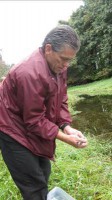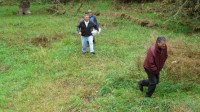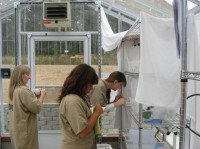By Graduate Research Associate Evan Hayduk
Festuca Roemeri, Roemer’s Fescue
This is the first installment in a new series of pieces we are calling our plant profiles. Over the coming months we will highlight one of the 40 species of prairie or riparian plants that are grown at Stafford Creek Correctional Facility. This is intended to give you an idea of what we are growing, focus on the conservation importance of each species, and offer a few fun facts about each species.
Basic Information: Roemer’s fescue is a bluish, gray-green tufted bunch grass that grows from British Columbia (southeastern Vancouver Island and the Gulf Islands), and west of the Cascade Mountains in Washington, Oregon and Northern California. These areas are typically temperate, with maritime influence. Roemer’s fescue grows from sea level to about 2500 ft. The species is also found in thin-soiled windswept shorelines on the islands of the Puget Sound, the Strait of Juan de Fuca and the Straits of Georgia.
Ecological Importance: A foundation species of the prairies of the Pacific Northwest, Roemer’s fescue is predominately found in the glacial outwash prairies of the South Sound and those which have a history of anthropogenic burning. Its quick growth makes this fescue an effective ground cover, but its bunch grass nature allows for the growth of other important prairie species, including associated species common camas (Camassia quamash), field woodrush (Luzula campestris), spike goldenrod (Solidago spanthulata), early blue violet (Viola adunca) and prairie lupine (Lupinus lepidus) to name a few.
Who is this Roemer guy anyway? Roemer’s fescue is named for Swiss physician, professor of botany and entomologist Johann Jakob Roemer (1762-1819). Roemer was best known for one of the greatest achievements in the history of Swiss entomology, the Genera insectorum Linnaei et Frabricii. Roemer also published the 16th edition of Carlos Linnaeus’ Systema Vegetabilium.





























